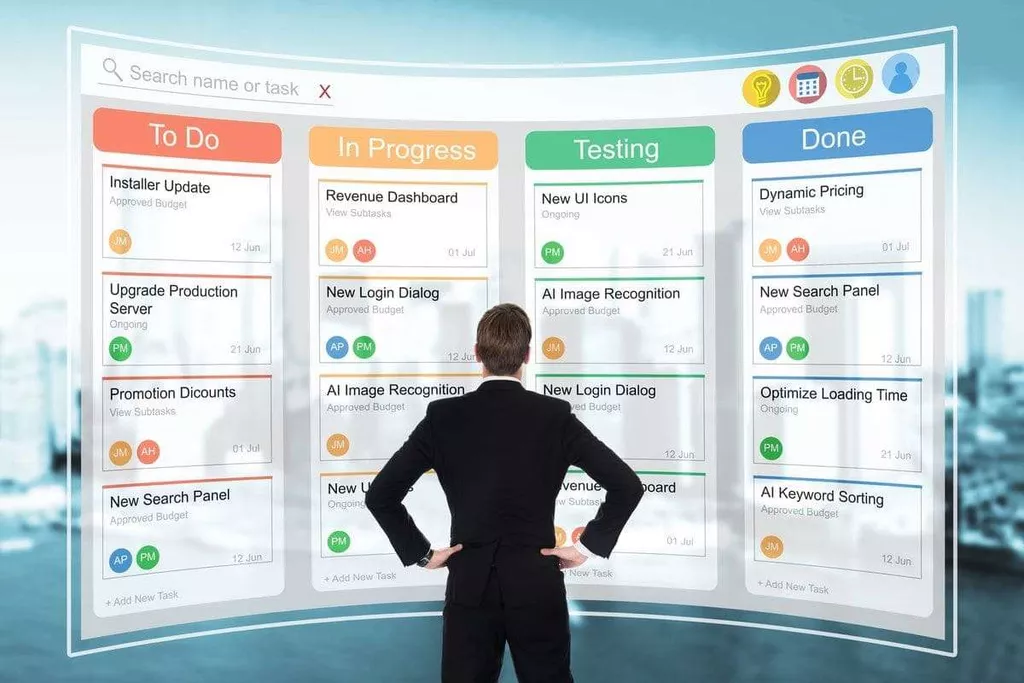How to create a successful DevOps organizational structure
However, the risk with small teams means that getting all the required expertise might be devops structure a challenge, and loss of a team member might significantly impair the team’s throughput.

Separate the development and maintenance work being performed on the pipeline from the production pipelines being used by the other teams. Many people see DevOps as simply development and operations working cohesively and collaborating together. Just as important is for operations teams to understand the desire of development teams to reduce deployment time and time to market. A successful DevOps team is cross-functional, with members that represent the business, development, quality assurance, operations, and anyone else involved in delivering the software.
Step 2: Aligning Business Goals for the DevOps Team Structure
Start with the basic goals, add in wish list items, and write it all out attaching a timeframe as needed. The map should include a list of action items broken down by priority and who is responsible for completing each step. Finally, keep a keen eye on costs and understand how the outsourcer will charge for its services.

The particular activities and tasks will vary, depending on the existing corporate culture, proximity to like-minded IT folks and leadership. Get ideas from the experts’ advice below, and formulate a plan to introduce everyone to DevOps, get them excited about it and ensure ongoing communication. Another ingredient for success is a leader willing to evangelize DevOps to a team, collaborative teams, and the organization at large. The excellent work from the people at Team Topologies provides a starting point for how Atlassian views the different DevOps team approaches. Keep in mind, the team structures below take different forms depending on the size and maturity of a company. In reality, a combination of more than one structure, or one structure transforming into another, is often the best approach.
Complicated-subsystem team
Plus, large-scale projects that address underlying infrastructure or platform issues should receive as much attention as feature development. Moving from a legacy infrastructure to using Infrastructure as Code (IaC) and microservices can offer faster development and innovation, but the increased operational workload can be challenging. It’s best to build out a strong foundation of automation, configuration management, and continuous delivery practices to help ease the load. By integrating security into a continuous integration, continuous delivery, and continuous deployment pipeline, DevSecOps is an active, integrated part of the development process. Security is built into the product by integrating active security audits and security testing into agile development and DevOps workflows. Practices like continuous integration and continuous delivery ensure changes are functional and safe, which improves the quality of a software product.
- Finding the pain points and bottlenecks in your organization and identifying their causes will give your DevOps teams a focus towards which they can direct their efforts.
- It’s a new way of working, a cultural shift, that has significant implications for teams and the organizations they work for.
- Everyone on a DevOps team must understand the entire value stream — from ideation, to development, to the end user experience.
- When used together, agile and DevOps result in high efficiency and reliability.
- Here, ops acts as an internal consultant to create scalable web services and cloud compute capacity, a sort of mini-web services provider.
- In this model, a single team has shared goals with no separate functions.
- Stream-aligned teams can use the products created by platform teams to simplify and accelerate their work.
Over the long term, cracks start to appear, spreading from the blind spots into areas the team initially did well. Many low-performing teams were previously blinkered teams that were delivering well. As DevOps is started up as a pilot program, a DevOps team forms to learn the new tools and technologies and then begin implementation. Then they become their own silo, making sure the uneducated masses don’t spoil their new utopia. Bringing DevOps to an organization means making some changes to the culture and structure of teams and the organization.
Using ChatGPT to mark and provide feedback to students.
DevOps is a software development approach emphasizing collaboration, automation, and continuous delivery to provide high-quality products to customers quickly and efficiently. DevOps breaks down silos between development and operations teams to enable seamless communication, faster time-to-market, and improved customer satisfaction. It allows a team to handle the complete application lifecycle, from development to testing, operations, and deployment.
It shows cooperation between Development and Operations groups to deploy code to production quickly in an automated and repeatable manner. Every phase of the software development lifecycle, including planning, coding, testing, deployment, and monitoring, is heavily automated in DevOps. This improves productivity, ensures consistency, and lowers error rates in the development process. A culture of continuous improvement is also promoted by DevOps, where feedback loops are incorporated into the procedure to facilitate quicker iteration and better decision-making.
Source Code Management
As an enabling team, the goal is to give the knowledge to teams, not to dictate what they do with it. Where part of your system is highly specialized, you might use a complicated subsystem team to manage it. For example, if the skills needed are so specialized, you must pool them.
Your team should be self-contained and work should happen with immediate teammates to ensure fast delivery. Beyond work scope, minimal hand-offs can also take the form of automated processes. Automating your development cycle ensures that moving things along is a seamless process, regardless if the next step is an action like an automated test or merge to main, or an actual human. Does your team have time to address code quality changes (a.k.a. “tech debt”) to ensure changes are safe and easy? Mature teams rely on trunk-based development and CI/CD practices to maintain their codebase.
Cloud
Teams entrenched in siloed ways of working can struggle with, or even be resistant to, overhauling team structures to embrace DevOps practices. Some teams may mistakenly believe new tools are sufficient to adopt DevOps. Everyone on a DevOps team must understand the entire value stream — from ideation, to development, to the end user experience.

Taking an example from Spotify, the business teams are called squads, who handle specific services (e.g., search, playlist, player etc.). They sit together and act as a mini-startup, incorporating every component required to support a service throughout its lifecycle. A DevOps team mindset differs from traditional IT or scrum teams as it is an engineering mindset geared towards optimizing both product delivery and product value to the customers throughout a product’s lifecycle. While the actual https://www.globalcloudteam.com/ work a team performs daily will dictate the DevOps toolchain, you will need some type of software to tie together and coordinate the work between your team and the rest of the organization. Jira is a powerful tool that plans, tracks, and manages software development projects, keeping your immediate teammates and the extended organization in the loop on the status of your work. It’s important to understand that not every team shares the same goals, or will use the same practices and tools.
Steps for Building a Successful DevOps Team Structure
The understanding each team member brings from their discipline will reduce the need for handoffs and will make sure problems are found sooner or prevented altogether. Platform teams work with development teams to create one or more golden pathways. These pathways don’t prevent teams from using something else but offer supported self-service products that help teams improve delivery capability. DevOps teams monitor the entire development lifecycle — from planning, development, integration and testing, deployment, and operations. This allows teams to respond to any degradation in the customer experience, quickly and automatically.






